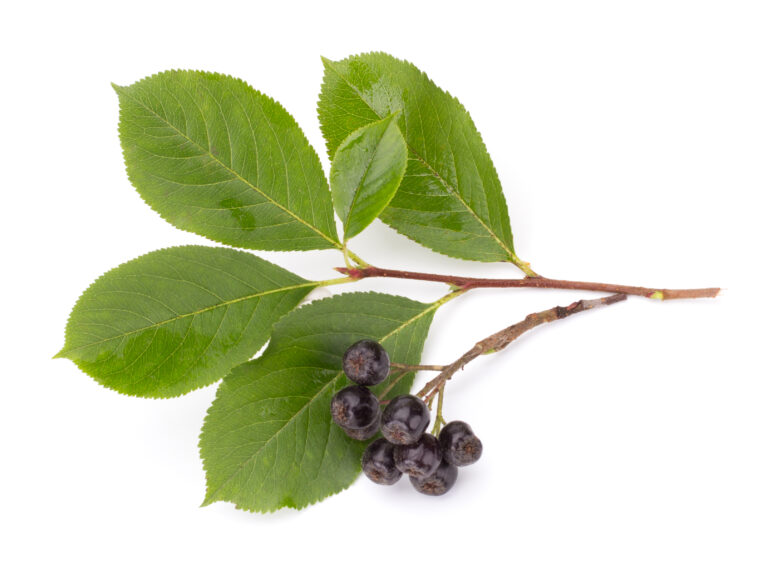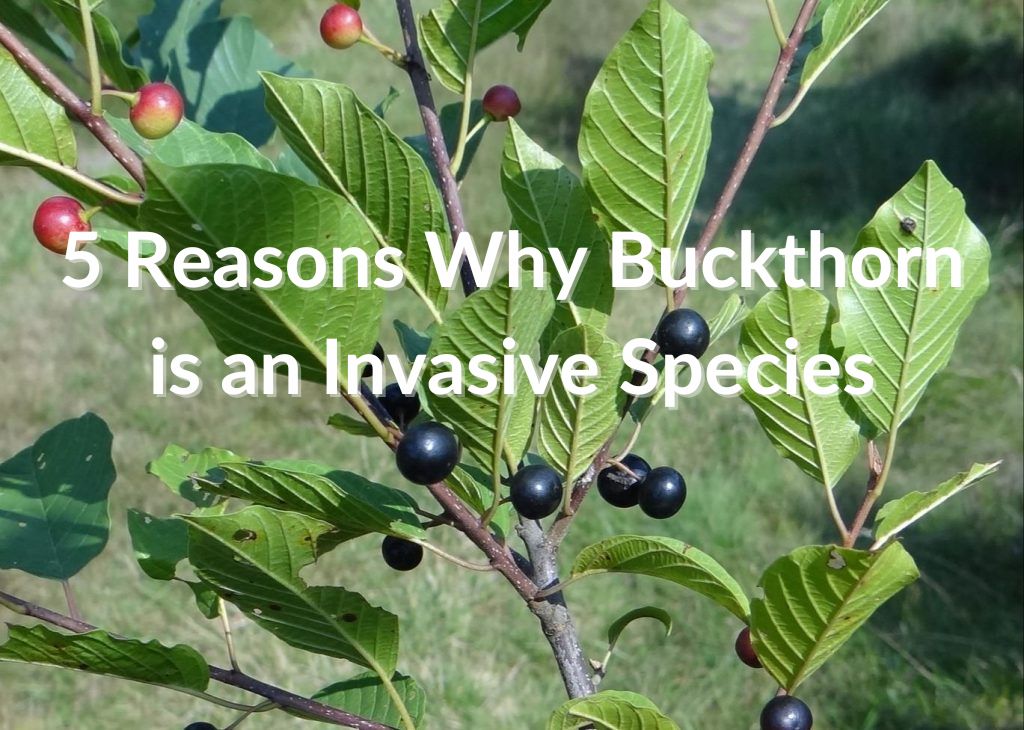Table of Contents
Invasive species are a growing concern worldwide, threatening biodiversity, ecosystem stability, and human economies. Among these, buckthorn stands out as a particularly aggressive invader. Initially introduced to North America for ornamental purposes and soil erosion control, buckthorn has rapidly spread across various habitats, causing significant ecological damage. This article examines several critical reasons why buckthorn is classified as an invasive species, offering an in-depth understanding of its detrimental effects on native ecosystems. If you’d like to explore more about buckthorn, read our blog Identifying Buckthorn in your Woodlands: 5 Obvious Signs
1) Rapid Growth and Reproduction
Buckthorn’s ability to grow and reproduce quickly is one of its most problematic traits. Each buckthorn shrub produces a large number of berries, each containing several seeds. Birds and animals eat these berries and subsequently disperse the seeds over large areas. This effective seed dispersal mechanism allows buckthorn to colonize new areas rapidly. Furthermore, buckthorn seeds have a high germination rate and can remain viable in the soil for up to five years, ensuring that the plant can establish dense thickets even if initial control measures fail. These dense stands of buckthorn outcompete native plants for sunlight, water, and nutrients, leading to a significant reduction in biodiversity.

2) Allelopathic Effects
Allelopathy refers to the chemical inhibition of one plant by another. Buckthorn exhibits strong allelopathic properties, releasing chemicals through its roots and leaf litter that inhibit the growth of surrounding vegetation. These chemicals create a hostile environment for native plants, preventing their seeds from germinating and their seedlings from growing. As a result, areas invaded by buckthorn often see a dramatic decrease in native plant diversity. This loss of plant diversity can have cascading effects on the ecosystem, affecting everything from soil health to the animals that rely on a variety of plants for food and shelter.
3) Alteration of Soil Composition
Buckthorn significantly alters the composition and chemistry of the soil in areas it invades. The leaf litter of buckthorn decomposes more quickly than that of many native plants, releasing nutrients rapidly into the soil. This rapid decomposition can change the soil’s nutrient dynamics, often increasing nitrogen levels. Such changes can create conditions that are unfavorable for native plant species that are adapted to nutrient-poor soils but favorable for other invasive species. Additionally, buckthorn’s root system can change soil structure, making it harder for native plants to re-establish once buckthorn is removed.
4) Disruption of Native Fauna
The presence of buckthorn disrupts the intricate relationships between native flora and fauna. Many bird and insect species depend on native plants for food and habitat. For example, some native butterflies and moths lay their eggs on specific host plants, which are displaced by buckthorn. Similarly, birds that rely on native shrubs for nesting sites may find fewer suitable locations in a buckthorn-dominated landscape. The berries of buckthorn, while abundant, are less nutritious than those of many native plants, leading to potential declines in bird health and reproduction. This disruption of native fauna can lead to a reduction in biodiversity and changes in ecosystem function.
5) Resistance to Control Efforts
Buckthorn is notoriously difficult to control and eradicate. Mechanical removal, such as cutting or pulling, often results in regrowth from the extensive root system. Chemical treatments can be effective but require repeated applications and can have unintended consequences for non-target species and the environment. Furthermore, buckthorn can thrive in a wide range of environmental conditions, from full sun to deep shade and from wet to dry soils. This adaptability makes it challenging to create conditions that favor native plants over buckthorn. The persistence of a viable seed bank in the soil means that even after initial removal, buckthorn can re-establish itself if ongoing management efforts are not maintained. If you’d like to explore more about buckthorn removal, read our blog 7 Ways to Effectively Remove Buckthorn.

Conclusion
Buckthorn’s invasive nature poses a severe threat to native ecosystems through its rapid growth and reproduction, allelopathic effects, alteration of soil composition, disruption of native fauna, resistance to control efforts, impact on water resources, habitat modification, and economic costs. These factors collectively contribute to its ability to outcompete and displace native species, leading to significant ecological damage. Effective management of buckthorn requires a comprehensive and sustained approach, including mechanical removal, chemical treatments, and ongoing monitoring. By understanding the mechanisms behind buckthorn’s invasiveness, we can develop better strategies to mitigate its impact and restore the health and diversity of affected ecosystems. For more detailed information and tailored advice, visit our page on buckthorn removal. For support on your next buckthorn removal project, please feel free to reach out through our contact form, and our team will be happy to help.



